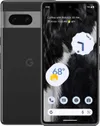Best Google Pixel 7 and Pixel 7 Pro plans in Australia (January 2026)
Should you buy from Telstra, Optus, Vodafone or Google? We’ve found your best options for saving cash

The Google Pixel 7 and Pixel 7 Pro released in October 2022, and they’ve more recently been joined by the 'budget-friendly' version, the Google Pixel 7a. We’re not expecting any new additions to Google’s range until later this year, when the Pixel 8 series could be unveiled.
If you’re wanting to buy now, we recommend Vodafone as the best place to get the Google Pixel 7 on a plan. While Vodafone isn’t offering a discount on the handset, it still has the cheapest monthly prices available and a good amount of data to go with it. Vodafone also gets our vote if you want to get the Pixel 7 Pro on a plan.
If you don’t want to be tied down to a phone contract, you can also buy the device outright. We’ve occasionally spotted discounts from JB Hi-Fi, and they may become more frequent as we get closer to the launch of the Google Pixel 8. For recommendations when buying outright, some of the best SIM-only plans in our dedicated guide are much cheaper than what you’ll find from Telstra, Optus or Vodafone.
Noteworthy Google Pixel 7 and Pixel 7 Pro deals
Before signing up for a Pixel 7 or Pixel 7 Pro contract, these are the deals you need to know about:
- Telstra | save AU$350 on the Pixel 7 Pro when you stay connected to Telstra over 12, 24 or 36 months
Best Google Pixel 7 and Pixel 7 Pro plans: our picks

Best overall Google Pixel 7 Pro plan
Google Pixel 7 Pro (256GB) | 40GB data | 24 months | AU$105.37p/m
There aren’t any discounts on Pixel 7 Pro plans at the moment, but Vodafone is your most affordable option. Vodafone isn’t stocking the 128GB base model on its online store, but you can upgrade to the 256GB version for a reasonable price. We recommend pairing the Pixel 7 Pro with the AU$45 Small plan, as that’ll get you 40GB of data and along with handset repayments, it’ll cost you AU$105.37 a month.
Total cost over 24 months is AU$2,528.88
Best overall Google Pixel 7 plan
Google Pixel 7 (128GB) | 40GB data | 24 months | AU$86.62p/m
While there’s no discount on this phone currently available, Vodafone has the cheapest Pixel 7 plan. Just note that Vodafone is only stocking it in the black colour option. We recommend pairing it with Vodafone’s AU$45 Small plan, as it’ll set you up with 40GB of data a month which is plenty for most people. Along with handset repayments, your monthly bill will be AU$86.62. For other colour options, consider going with Optus instead.
Total cost over 24 months is AU$2,078.88
Cheap Google Pixel 7 and Pixel 7 Pro plans
Looking to get the Pixel 7 or Pixel 7 Pro on a cheap plan? You’ll want to look at the 128GB model of the device, and you might want to opt for a 36-month contract. Please keep in mind that while a 36-month plan will shrink your monthly bill, you’ll end up paying more in the long run, as you’ll be tied to your telco’s plan for longer. Choosing a shorter contract term or buying outright means you can pair your device with a cheaper SIM-only plan instead. We have live-updated widgets below which show you the cheapest monthly options from the major telcos:

Outright Google Pixel 7 and Pixel 7 Pro deals
The Google Pixel 7 and Pixel 7 Pro are available to buy outright from these major retailers:
| Storage | 128GB | 256GB |
|---|---|---|
| Price | AU$999 | AU$1,129 |
| Colours | Black, white, light green | Black, white, light green |

| Storage | 128GB | 256GB | 512GB |
|---|---|---|---|
| Price | AU$1,299 | AU$1,449 | AU$1,599 |
| Colours | Black, white, khaki | Black, white, khaki | Black, white, khaki |

Google Pixel 7 at a glance: what you need to know

OS: Android | Screen size: 6.3-inch OLED (90Hz)| Resolution: 1080 x 2400 | CPU: Google Tensor G2 | Memory: 8GB RAM | Weight: 197g |Storage: 128GB / 256GB | Battery: 4,355mAh | Rear camera: 50MP wide (ƒ/1.85), 12MP ultrawide| Front camera: 10.8MP (ƒ/2.2)
The Google Pixel 7 is more of an incremental update on the Google Pixel 6, which was a truly revamped device when it first came out. Google has very much carried over the design language of the Pixel 6, notably with the distinctive bar which houses the cameras. On the Pixel 7 though, the camera bar is aluminium, whereas the Pixel 6’s cameras are housed in glass.
The biggest upgrade arrives in the form of the Tensor G2 chipset, which is the successor of Google’s first Tensor processor, which debuted in the Pixel 6 range. The Tensor G2 chip focuses its power on machine learning and AI-based processes. In real terms, it’s used to improve photo processing (such as Photo Unblur) and speech recognition.
Google also says the Tensor G2 chip gives the device better battery life, claiming 24 hours of use on a full charge. That proved accurate in our own testing, and most days we spent with it, we ended up with around 15% of juice before bed – that’s with some streaming, gaming and social media use.
The front camera has bumped up to 10MP from 8MP, and it now supports 4K video at 60fps. The rear camera array includes a 50MP main camera and a 12MP ultrawide camera, but the overall improvements to the Pixel 7’s photography skills can really be put down to the software. It gives you excellent results in low-light (Night Sight) and can fix up blurry photos with Photo Unblur. Cinematic Blur provides bokeh akin to the iPhone's Cinematic Mode.
The 6.3-inch OLED display on the Pixel 7 is slightly smaller than the Pixel 6's 6.4-inches, but it retains the 90Hz refresh rate, which is a little unfortunate. The Pixel 7 also features 8GB of RAM and your choice of either 128GB or 256GB of storage. Colour choices include black, white and a pastel-y green called Lemongrass.
Google Pixel 7 Pro at a glance: what you need to know

OS: Android | Screen size: 6.7-inch OLED (120Hz)| Resolution: 1440 x 3120 | CPU: Google Tensor G2 | Memory: 12GB RAM | Weight: 212g | Storage: 128GB / 256GB / 512GB | Battery: 5,000mAh | Rear camera: 50MP wide (ƒ/1.85), 12MP ultrawide (ƒ/2.2) / 48MP telephoto (ƒ/3.5) | Front camera: 10.8MP (ƒ/2.2)
If you can stretch your budget a little further, the Google Pixel 7 Pro might be the device for you, though you’ll need deeper pockets. Prices start at AU$1,299, and as with the standard Pixel 7, it’s an iterative upgrade on the Google Pixel 6 Pro, rather than a revolution of the formula. The screen is much the same – it’s a 6.7-inch LTPO OLED with a smooth refresh rate of up to 120Hz. As with the Pixel 7, the rear camera array is now housed in polished aluminium casing, opposed to the glass camera bar that gave the Pixel 6 its new look.
You’ll find the big changes happening internally, and Google’s new Tensor G2 processor is the headline feature. This chip doesn’t out-perform equivalent flagship processors in side-by-side benchmarks, but that’s because it’s built with a different focus in mind: AI and machine learning.
The Tensor G2 works its magic on photos, so you can clear up fuzzy photos (with Photo Unblur), take great pictures in low light (with Night Sight) and give the right exposure to more skin tones (with Real Tone). Photo Unblur is particularly game-changing, as it works on old pictures too, not just ones you’ve taken on the Pixel 7 Pro. The actual camera bar houses a 50Mp main camera, a 12MP ultrawide camera and a 48MP telephoto lens (the telephoto is what’s missing on the regular Pixel 7).
It’s not just the camera that benefits from the upgrade processor. Google-specific AI tasks help it recognise speech more accurately, and translate different languages faster. Overall, Google Assistant is more useful.
The Pixel 7 Pro also sees a boost in RAM (12GB instead of the 8GB in the Pixel 7). It’s available in 128GB, 256GB and 512GB storage options, with colour choices of black, white and a pale green-grey called Hazel.
- See the best SIM-only plans in Australia
Sign up for breaking news, reviews, opinion, top tech deals, and more.

Jasmine Gearie was previously an Ecommerce Editor at TechRadar Australia, with a primary focus on helping readers find the best mobile and NBN plans. During her time with TechRadar, she also reported on important telco news in Australia, and helped track down tech deals to help readers save money.







